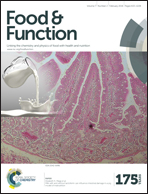Grape seed procyanidin B2 protects podocytes from high glucose-induced mitochondrial dysfunction and apoptosis via the AMPK-SIRT1-PGC-1α axis in vitro
Abstract
Grape seed procyanidin B2 (GSPB2) was reported to have protective effects on diabetic nephropathy (DN) as a strong antioxidant. Our previous studies demonstrated that GSPB2 was effective in ameliorating podocyte injury in rats with DN. However, little is known about the benefits of GSPB2 in protecting against podocyte apoptosis and its molecular mechanisms in vitro. In the present study, we investigated whether GSPB2 could protect podocytes from high glucose-induced apoptosis and explored the possible mechanism. Cell viability and apoptosis were detected by 3-(4,5-dimethylthiazol-2-yl)-2,5-diphenyltetrazolium bromide (MTT) and flow cytometry, respectively. The intracellular reactive oxygen species (ROS) level was measured using a dichlorofluorescein diacetate (DCFH-DA) fluorescent probe. Real-time reverse transcription-PCR was used to determine the gene expression of nuclear respiratory factor 1 (NRF-1) and mitochondrial transcription factor A (TFAM), and quantitative real-time PCR was used to detect mitochondrial DNA (mtDNA) copy number. Western blots were carried out for the related protein expression in podocytes. Our results showed that GSPB2 significantly inhibited high glucose-induced podocyte apoptosis and increased the expression of nephrin and podocalyxin. GSPB2 treatment also suppressed intracellular ROS production and oxidative stress. The mRNA expressions of NRF-1, TFAM and mtDNA copy number were markedly increased, and mitochondrial swelling was effectively reduced in podocytes cultured under high glucose after GSPB2 treatment. The AMPK-SIRT1-PGC-1α axis was also activated by GSPB2 intervention. In conclusion, GSPB2 protected podocytes from high glucose-induced mitochondrial dysfunction and apoptosis via the AMPK-SIRT1-PGC-1α axis in vitro, suggesting a potential role of GSPB2 in the treatment of DN.


 Please wait while we load your content...
Please wait while we load your content...